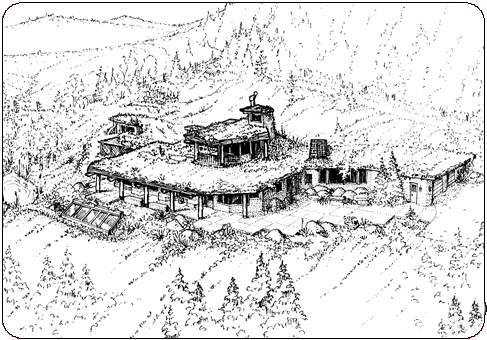The best survival residences are designed to look completely conventional, your safe house or retreat does not have to look like a fortress or a bunker. There is no benifit in being labeled as an extremist, or identified as a potential target during a diaster. A properly designed survival residence has facilities and equipment that can allow you to maintain a nearly normal lifestyle during a crisis. When planning a safe house or survival retreat, it is important that it be located far enough away from your primary residence so that each residence will not be effected by any event you may face. For example:
- If you're in a metropolitan area, the safe house should be in a rural area or a smaller town.
- If you're in a seismic active zone, you're retreat should be located outside of such areas.
- If you're in a coastal zone, the safe house should be inland.
If circumstances dictate an evacuation, you will be able to evacuate to a safe house fully stocked with all the necessary supplies and provisions. Some features you might find desirable in a survival retreat are:
- Remote location, this can offer you protection.
- Accessible to a small town where additional supplies and information can be obtained.
- Not too ostentatious, so that it doesn't attract attention or become a target for vandalism.
- Near a spring, well, stream or other natural source of water.
- Reserve or standby electrical power
- Multi-fuel cooking facilities, and water heating equipment
- Stocked with enough weapons and ammunition for defense and hunting requirements.
- Equipped with tools necessary for self sufficiency.
- Near a natural, harvestable food source
- Have enough arable land for growing vegetables and other crops.
- Greenhouse and other food production facilities
- Equipped with a fireplace or wood stove for cooking and heat.
- Multi-fuel furnace (burns at least three different fuels)
Arriving at your safe house and finding that all your pre-positioned supplies have been appropriated could present a problem. A solution to this would be to have cache of stored supplies at a commercial storage unit in a nearby town. Beyond the security provided, there are other advantages to using self-storage facilities:
- Most storage facilities allow 24 hr access allowing easy retrieval of your supplies.
- Would allow you to be less conspicuious with multiple small trips for supplies, rather than one massive long haul from your home.
- Some storage facilities are environmentally controlled, which could aid in storage of certain provisions

